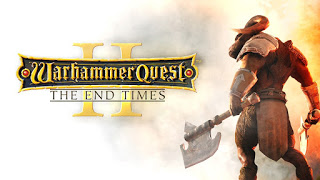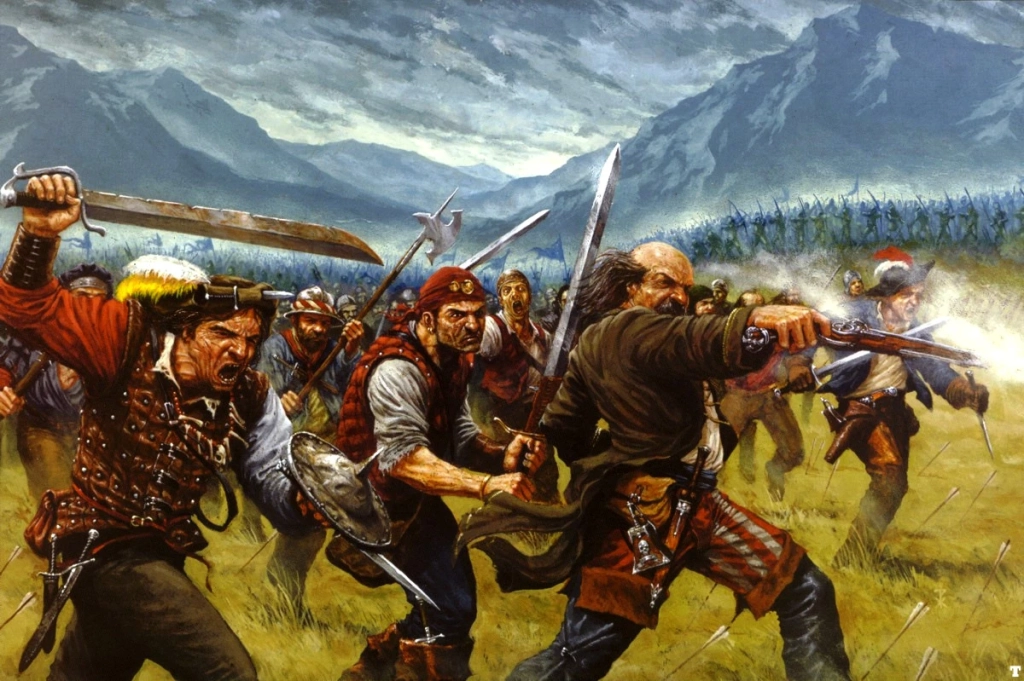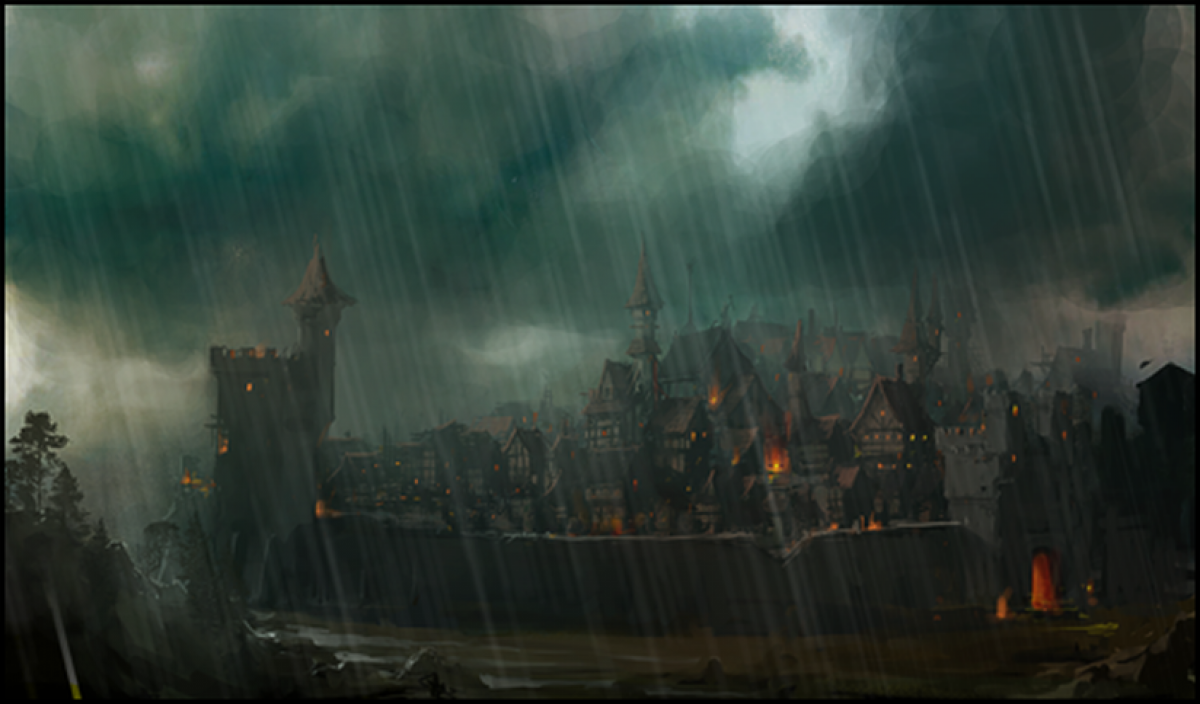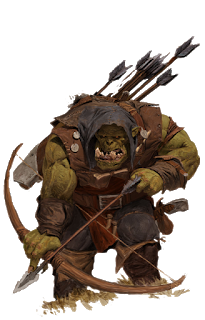Yeah, I know that I was supposed to review “Ironclad”, but stuff happened and y’all get something else. Almost five years ago I’ve managed to finish the first “Warhammer Quest” on the PC, and now I’ll tell you all that you need to know about its sequel!
Let’s not beat around the bush here – this title takes place during the End Times, the final death troes of the venerable Warhammer Fantasy. Now, as most people I consider the finale of WFB to be some of the worst written fiction of all time. Fun fact, I haven’t read a single positive comment about it! Really, not even one. There were a few people who liked the army lists they’ve prepared in the ET books, but I haven’t met a single person who said: “Yes, the End Times were fantastically written. Can I have some more, please?”
That said there were a few good things about them, mainly the “Vermintide” games. “Vermintide” 1 & 2 are seriously some of the coolest, most fun video game titles I’ve played in years. I have 100+ hours clocked in the first part, and I even bought all of the DLCs for them. I’ve reviewed this title some time ago (as well as its expansions), and gave it some very high notes. That said, “Vermintide” 1 and 2 were not the only video games set during the End Times. In 2017 a sequel to the mobile-born “Warhammer Quest” was published by Perchang, and it takes place during the final months of the Warhammer world.
 |
| The title card for this game is really badass! |
I enjoyed the first “Warhammer Quest” quite a lot. It had this classic WFRP feel to it, the missions were interesting (for most part) and the combat was satisfying and visceral. Because of a nasty glitch I wasn’t able to finish the very last mission of the game, but given the fact that I’ve killed all of the enemies in it, I can safely say that I did managed to beat the first “Warhammer Quest”. So how exactly does it sequel manages to improve things? Or is it a step backwards in terms of quality?
First of all, the core mechanics are pretty much the same. You travel through three different provinces of the Empire, during the titular End Times, all the while trying to slow the tide of Chaos. This time your party may include some odd individuals like the Druchii Sorceress or a Blood Dragon. I used some of these “baddies” for a couple of missions, but ultimately finished the game with an Ogre, a Witch Hunter, a Glade Guard and Bretonnian Knight. I was never a fan of the idea that suddendly beings like the undead or the Dark Elves would fight alongside men or dwarves. The long history of bloodshed, cruelty and violence should, in my opinion, prohibity any sort of alliance between the forces of order and the more evil-aligned factions, even in a face of certain doom coming from the north. Still, it was fun to shoot doombolts at nurglings and to pit a hench Blood Dragon against a couple of minotaurs.
Other than that, the hero roster is pretty generic. Dwarf Slayer, Sigmarite Warrior Priestess, Asrai Wardancer and Empire Captain, are some of the classes available in this game. Generally I’ve played “Warhammer Quest 2: The End Times” the same way as its prequel. I had two good melee combatants and two support/shotty heroes in my party. For most missions this setup worked really well, and handled almost every challenge with little to no problems.
When you start a mission with a max of four of your chosen heroes, you’ll immediately enter a grim-looking dungeon filled with all sorts of baddies. This is where I have to commend the graphics team. The game looks good, especially for an iOS port. There are slight improvements over the first part, especially when it comes to lighting and enemy models. I like that, once again, almost every piece of main equipment is shown on our characters models. Swords, shields and armor makes every hero rather distinct, and even enemies who wield unique weapons can be immediately identified as a major threat, because of their models. The dungeons themselves are very climactic. For example the second chapter, which involves Skaven, has a lot of Warpstone shards and Horned Rat’s symbols, scattered around every dungeon. The third part, focused on Khorne, is truly bloody and spiky, with lots of skulls and bones strewn around every location. Good stuff.
The combat is straightforward, and uses the same mechanics as the first game. Each hero and enemy has a certain number of action points that he can spend to either move, attack, shoot or use equipment or one of special abilites. Once again it’s all about counting tiles and good planning. Some of the heroes’ abilities and gear can benefit the entire party, and some of the attacks can potentially target allies. Strategy is the key, as well as utilising your environment. Sometimes it’s better to create a chokehold in between two rooms, than to blindly rush towards danger. Be mindful, however, as monster reinforcements are a thing in this game, just like in the first title. Fortunately they’re less frequent now! One of my main criticisms towards the original “Warhammer Quest”, was the absurd frequency with which new combatants entered the dungeons to harass the party. I’m glad that Perchang made a right call here and toned down the number of gribblers appearing randomly.
 |
| Especially since some of them can be a real challenge! |
The combat itself is pretty standard for a title like that. RNG controls everything, and it’s up to you to make sure to mitigate any negative effects that your warriors may suffer. Poison gas and fire are especially nasty. Fortunately this game did not repeat the god awful shooting mechanics from the last one, in which my elite Shadow Warrior wasn’t able to hit the side of a barn with his priceless artifact bow. I was really worried that “Warhammer Quest 2: The End Times” would also suffer from this problem, alas my worries were unfounded. Thank you, Perchang!
After the battle it’s time to grab some loot and head to the nearest city to buy/sell your good, hire new members (or let go of the old ones), train and accept next missions. This is where “Warhammer Quest 2: The End Times” stumbles a bit. The ammount of loot and its quality is rather poor. The heroes often start with a solid selection of gear and money isn’t really a problem in this game (especilly when you’ll start “selling” unwanted adventurers). Most of the armor and weapons are also kinda useless, especially when compared to like 2-3 best pieces of gear, available for each hero. Late game I was really only fishing for potions and protection scrolls (which by the way make every engagement waaaaay too easy). It’s not like this is a big deal, but I do remember that the first “Warhammer Quest” handled its gear mechanics much better.
Then there are missions and the enemies with which our heroes will clash their swords. The whole game takes place in 3 provinces of the Empire – Middenland, Reikland and Talabecland. In Middenland we’ll have to stop a combined onslaught of beastmen and Nurglites. In Reikland we’ll foil the evil schemes of vile ratmen, and in Talabecland the forces of Khorne will (hopefully) blunt themselves on our shields. The first two acts are comprised of 10 missions, while the last one has only 7 main encounters. It’s worth mentioning that the Talabecland act felt… rushed. Some of the campaign missions were really, really short, especially when compared to the Middenland section, and the artifical boosting of difficulty was really felt in that last segment. I didn’t mind that much, to be honest, since at that point I’ve played the game for a total of 30 hours, but still – the change in pacing was evident.
Naturally, just like in the first game, there are various side quests. They’re all about clearing dungeons for loot and XP. I’ve grinded a fair ammount of time in Middenland, after getting punked by the final boss of this province, but after finally beating him, and already having the best gear possible for my whole party, I’ve never did any side quests in both Reikland and Talabecland. There was no point.
Oh, there are also random encounters during the travel between various settlements. Some of them are ambushes during which a slightly weaker party (usually 1-2 heroes) must clear a room full of monsters. Others are all about accepting the mysterious strangers’ potion or sticking your hand under a strange rock and stuff like that. The latter ones often were rather nasty, and ended with one or more of my heroes injured. The game supposedly calculates the results of these encounters, based on each character’s specific skills, but even when I had very high level heroes, they often got mauled. In the end I’ve tried to avoid these random encounters altogether. They weren’t really that fun to experience.
The various missions were pretty interesting and they’ve retained the overall theme of a world coming to an end. I really felt that no matter how many chaos goons my heroes will kill, there’ll always be more. The party visits a couple of famous locations from the lore of Warhammer Fantasy, including castle Drachenfels and the Red Moon Inn (there’s a hilarious “Vermintide” reference there). Some of the mission descriptions are downright creepy and unsettling, even eldritch at times. This, combined with excellent music and generally decent sound effects, makes for a welcome and fulfilling Warhammer experience.
The enemy roster is pretty straightforward – it’s basically Chaos in its many forms, plus the loathsome Ratmen (and all their vile kin!). There are beastmen, including the god-specific ones, Marauders, clan Eshin assassins, Stormvermin, Trolls (the only greenskin-related baddies in game) and more. I liked the fact that most of them had strong and weak points which a player had to memorize, to win a battle against them. Some of the baddies are more resilient to slashing damage, others can take a mace to the face and keep standing. The enemy archers return and they’re still a nuisance, although not as big as in the first game. Boss-like baddies usually carry magical gear and have a ton of HP. Against these villains a good strategy is a must, or else you’ll have to start a dungeon all over again, and some of your guys might even get permanently hurt after a botched engagement.
I’ve found it rather strange that not a single Skaven enemy uses any sort of projectile. Likewise, the Khornate roster felt a bit limited. These are not any real complaints, but if there’ll ever be a third part of this game, I would serioysly like for its makers to include lots more enemies. Fighting countless evil creatures from Warhammer Fantasy is where it’s at!
Finally there’s a huge positive thing about “Warhammer Quest 2: The End Times” – there’s no DLC. You buy the game and that’s it. I don’t know, maybe on iOS and Android there was additional content, but the Steam version doesn’t have any. Plus I’ve got this title for a really decent prize, which is also a plus. For what this game offers you, the ammount of money that I’ve paid felt just right.
According to my Steam account it took me 37 hours to finish “Warhammer Quest 2: The End Times”. I’ve completed the first game in 43 hours, but I’ve grinded much less in that title. Still, I never felt that the sequel overstayed its welcome. It lasted just the right ammount of time.
In the end I would recommend “Warhammer Quest 2: The End Times” to anyone who likes a solid, if unpretentious isometric fantasy experience. This game will not earn any major awards for what it brings to the digital table, but the entertainment that it offers is more than decent. The fact that it’s a fun title, which action takes place during the god awful End Times, says a lot about its quality. There are a few blemishes here and there (including some rather irritating bugs), but nothing too major. Hop on Steam, grab the game, play it and have fun. It should sate that Warhammer Fantasy fix, at least for a while.
 |
| All in all, a solid Warhammer Fantasy experience! |
James Purefoy will invade my blog in two weeks. Stay tuned for “Ironclad”!
Until next time!
Xathrodox86





























